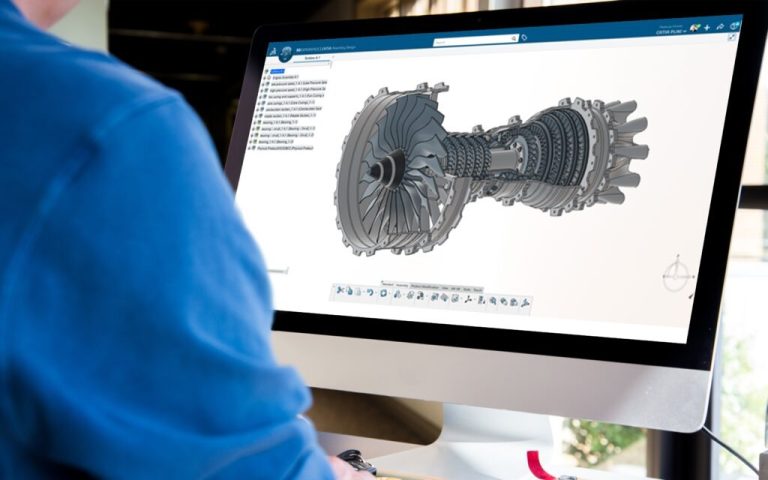C Cube CAD Centre in Erode offers a comprehensive CATIA course designed to equip engineers, designers, and students with the skills required to excel in 3D CAD modeling and design. CATIA, developed by Dassault Systèmes, is a powerful and versatile software widely used in aerospace, automotive, and other high-tech industries. Our course provides hands-on training and expert guidance to ensure you master CATIA’s capabilities and apply them effectively in your professional or academic projects.
INTRODUCTION OF DESIGN CONCEPT AND PROCEDURE
- Detailed Concept Of CAD
- Need & Importance Of CAD
- Overview About Actual Designing In Industries, Fundamentals Of Design And Its Implementation Methods
- All Characteristics Of Catia To User Friendly Atmosphere
- Superiority Of Catia With Its Use And Demand In Industries
Introduction To CATIA
- Introduction To Catia V5 Version.
- System Requirements
- Starting Catia Version V5
- The Workbench Concept
- Workbenches
- Adjusting The Catia Interface
- Creating And Managing Workspace
- Menu And Toolbars
- Starting New Drawing
- Finding Tools
- Selecting/Moving Objects With Mouse
- The Object/Action And Action/Object Approaches
- Working With Planes
- Graphic Properties Toolbar
- Changing The Graphic Properties
- Changing The Interface From 3d Modeling To 2d Sketching And Vice-Versa
- Uses & Description About Specification Tree, Navigation Compass.
- View Toolbar As A Common Toolbar For All The Interface.
Documentation Management
SKETCHER
- Introduction Of Drafting And Its Concept
- Entering/Exiting The Sketcher Workbench
- Coordinate Systems
- Profile Creation Tools For Creating 2D Sketch
- Modifying The Sketch Created (If Error Is There)
- Open Profiles And Its Limitations
- Tools For Changing Visualization And Orientation Of Sketch
- Uses Of Constrains Tools For Making Fully Constrained Sketch
- Operation Tools For Reducing Work And Easy Drawings.
- Creating Basic Sketch
- Positioned Sketching
- Commands Such As Lines, Circle Etc
- Pre-Defined Profiles
- User-Defined Profiles
- Setting Units
- Construction Geometry
- Constraining The Sketch
- Difference Between Dimensional Constraints And Geometrical Constraints
- Geometry & Constraints Management (Geometric And Dimensional)
- Explanation Of Fully Constrained Sketches
- Sketcher Re-Limitations
- Trim Options
- Quick Trim Options
- Mirroring An Object
- Placing/Making An Object In A Symmetrical Position
- Translation, Rotation And Scaling An Object
- Offset And Offset Propagation Modes
- Projecting A 3D Element
- Isolating Projecting Elements
- Sketch Analysis Window And Sketch Analysis
Quick Geometry Diagnosis
BASIC FEATURES OF PART DESIGNING
- Concept Of 3D And Part Design Terminology
- Selecting Sketch To Convert It Into Volumetric Design
- Concept Of Volumetric Designing With Respect To Industries
- Creating Base Features
- Selecting A Base Feature And Modifying Them
- Creating Volume In Linear Direction (Pad)
- Creating A Cavity In Volume In Linear Direction (Pocket)
- Limitations Of Pad And Pocket Command
- Restrictions For Pad/Pocket Profile Sketches
- Restrictions For Pad/Pocket Profile Sketches
- Creating Multi-Pads/Pockets
- Creation Of Axis At Required Place
- Dimensioning An Axis For Appropriate Work
- Creation Of Volume In Circular Shape (Shaft)
- Removal Of Volume In Circular Shape (Groove)
- Restrictions Of Revolved Features
- Creation/Removal Of Volume On Pre-Defined Path (Rib/Slot)
- Creation Of Hole Using Positioning Sketch
- Hole Creation Using Pre-Defined References
- Introduction To Stiffeners
- Creating A New Volume Using Two Different Sketches (Solid Combine)
- Volume Creation Using Multiple Sketches With Multiple Options
- Creating Cavity Using Multiple Sketches
DRESS-UP FEATURES OF PART DESIGNING
- Creating Curves Edges Using The Multiple References & Limitations(Fillet)
- Chamfering Body/Edges Using Available References
- Shell Creation In A Body.
- Advance Shell Creation In A Body With Different Dimensions Of Different Sides
- Adding Thickness To An Already Created Side/Volume
Removal Of Extra Faces In A Body
- Replacing The Face In A Body To Another Body
- Creating Thread And Taps In Cylindrical Body
DUPLICATING FEATURES OF PART DESIGNING
Mirroring Single/Multiple Feature With Respect To Plane
- Explode Mirrored Object/Objects For Further Use
- Patterns And Its Importance
- Use Of Standard Pattern Styles (Rectangular Pattern, Circular Pattern)
- Creating A New Pattern On User Defined Instances
- Need Of Exploding The Pattern For Editing And Additional Usage
- Keeping The Specifications To Create A Defined Patterns
- Translating An Object/Body From Its Original Position
- Rotate An Object/Body From Its Position With Respect To Axis
- Placing The Body/Object In A Symmetrical Position With Respect To Plane
- Change The Scale Of The Body By Selecting Different Faces Or With Axis System
- Importance Of Axis To Axis System And Its Use In Geometry
EDITING FEATURES OF PART DESIGNING
Investigating The Model
- Concept Of Parent-Child Relationships
- Redefining Parameters Of Previously Created Features
- Changing The Order Of Any Feature In A Specification Tree
- Hiding And Un-Hiding The Sketches/Features/Body
- Deactivating/Activating Of Features As Per Requirements
- Use Of Defining Any Feature In Work Object
- Resolving The Failures Of The Features/Body
ADDITIONAL FEATURES OF PART DESIGNING
- Importance & Use Of Reference Geometry
- Creating Points In A 3d Space With The Help Of Available References.
Creating/Introducing Line In 3d Space With References
- Uses Of Line Created In A 3d Space
- Introduction To Concept Of Planes
- Creation Of New Planes In A Geometry
- Options Available For Creating Planes In Free Body
- Multi-Body And Its Uses
- Inserting A New Body In Previously Created Body
- Concept Of Boolean Operations And Use Of Boolean Operation In Body
- Boolean Operation: Add
- Boolean Operation: Remove
- Boolean Operation: Intersect
- Measure Tools
- Use Of Graphic Properties Toolbar For Making Visualization Changes
ASSEMBLY MODELING & PRODUCT MODELING
- What Is An Assembly
- Defining A New Assembly Document
- Assigning Properties To The Product
- Tools Used For Creating Product Structure
- Use Of Compass In Assembly
- Importing Existing Components In A New Assembly
- Snapping Components
- Editing A Previously Created Part/Product In Assembly Features
- Exploding A Constrained Assembly
- Reordering Product Structure
- Reusing A Component (Copy/Paste)
- Components Catalogue
- Degree Of Freedom In The Assembly
- Constraint Creation
- Analyzing Created Constraints
- Assembly Features
- Making Pattern Of Any Object
- Using Existing Assemblies To Create A Product Structure
- Use An Object With Respect To Pattern
- Scenes
- Saving An Assembly Document
- Opening/Loading An Assembly
DRAFTING
- Introduction Of Drafting
- Need & Importance Of Drafting
- Starting The Drafting Workbench
- Defining The Sheet & Sizes
- Adjusting Of Drawing Sheet According To Object/Assembly
- Types Of Projection
- Using Predefined Drafting Styles
- Scaling The Drafted View
GENERATIVE DRAFTING
- Introduction
- Taking Projection Of Front View On Sheet
- Generating Different Views Such As Top View Etc
- Difference Between Primary And Secondary View
- Modifying An Existing View
- Generative Dimensions Balloon Generation For Drafting Of Assembly
INTERACTIVE DRAFTING
- Introduction
- View Planes
- Creating Multiple Projections Of Different Views
- Creating Views For Folding Lines
- Show/Hide Hidden Lines, Centre Line, Axis Line, Thread Etc
- Modifying An Existing View
- Creating Dimensions
DATA EXCHANGE
- Converting Files For Transferring
- Converting Into IGES, STEP, PARASOLID Etc.
- Convert Into Jpeg, Mpeg, Tiff, Pdf Files
CATIA V5 ADVANCED TRAINING
WIREFRAME & SURFACE DESIGN
- Introduction To Surface Design
- Importance Of Surface
- Process Of Surface Designing
- Entering The Workbench
- Generative Surface Design Process
- Difference Between Open Bodies & Connected Bodies
- 3D Wireframe Geometry
- Points & Its Role
- Creating Multiple Points On A Curve
- Lines In Free Body
- Line & Axis Lines
- Creating Line & Axis Line In Free Space
- Creating Polylines
- Role Of Planes In Space
- Creating New Plane With New References
- Creating A Set Of Planes In An Order
- Creating Free Body Curve
- Connecting Different Curves
- Analyzing The Sketches And Repairing/Editing
- Surface Geometry
- Creating Surface Using Multiple Sections
- Creating A Blend Surface
- Creating A Swept Surface
- Manipulating The Swept Surface With Reference Surface Option
- Extracting An Edge From A Surface
- Extracting Face Of Different Surfaces
- Creating A Solid From Surface
- Splitting Object/Body With Surface
- Datum Features
- Thickening A Surface
- Closing A Surface In To Volumetric Body
- Editing Created Elements
- Checking Connections Between Surfaces
- Checking Connections Between Curves
- Updating Object/Part
- Dynamic Sectioning View
SHEETMETAL DESIGN
- Introduction To Sheetmetal Design
- Generative Sheetmetal Design
- Entering The Sheetmetal Workbench
- Process Of Sheetmetal Designing
- Sheetmetal Parameters & Its Importance
- Sheetmetal Wall
- Types Of Walls
- Profile Based Wall
- Extruded Wall
- Creating A Multi-Connected Profile Walls
- Additional Types Of Walls
- Tangent Walls
- Creation Of Walls On The Edge
- What Is Bend
- Bending A Flat Sheet
- Creating A Swept Surface With Guide Curves
- Swept Surface Including Spine
- Manipulation Of Swept Surface With Position Profile
- Introduction To Spine
- Line Sweep
- Circle Sweep
- Adaptive Swept Surface
- Joining Different Surfaces
- Trimming Created Elements
- Fillets
- Transformation Features In Surface Geometry
- Extrapolating Surface
- Disassembling A Surface
- Healing Of Surface
- Restoring A Surface
- Folding & Unfolding Of The Faces
- Creating Relief On The Corner
- Flange & Its Types
- Features Of Sheetmetal
- Creating Holes In Sheet
- Stamp & Its Role In Industry
- Standard Stamps
- Opening Faces Of Stamp
- Translating Created Sheet With Parameters
- Rotating Sheetmetal Parts
- Pattern And Its Types
- Mirroring The Features
- Unfolded View
Catia Kinematics
- Creating a Trace from a Moving Part
- Simulation with Commands
- Mechanism Dress-up
- Mechanism Analysis
- Kinematic Sequences
- Mechanisms
- Clash Detection
- Distance Analysis
- Advanced Joints
- Commands
- Joint Types & Degrees of Freedom
- Simulations
- Creating Swept Volumes
- Simulation With Respect to Time
- Speed and Acceleration
- Simulation by Laws



